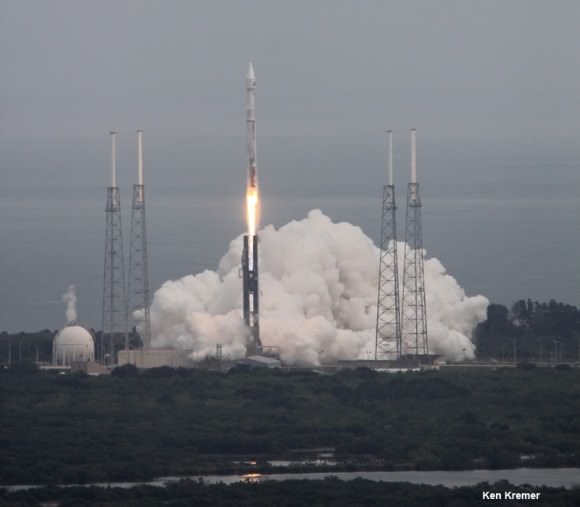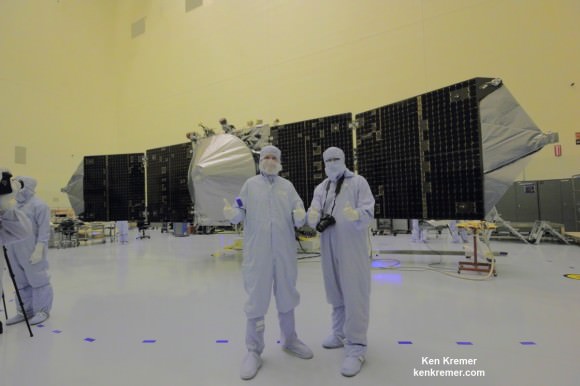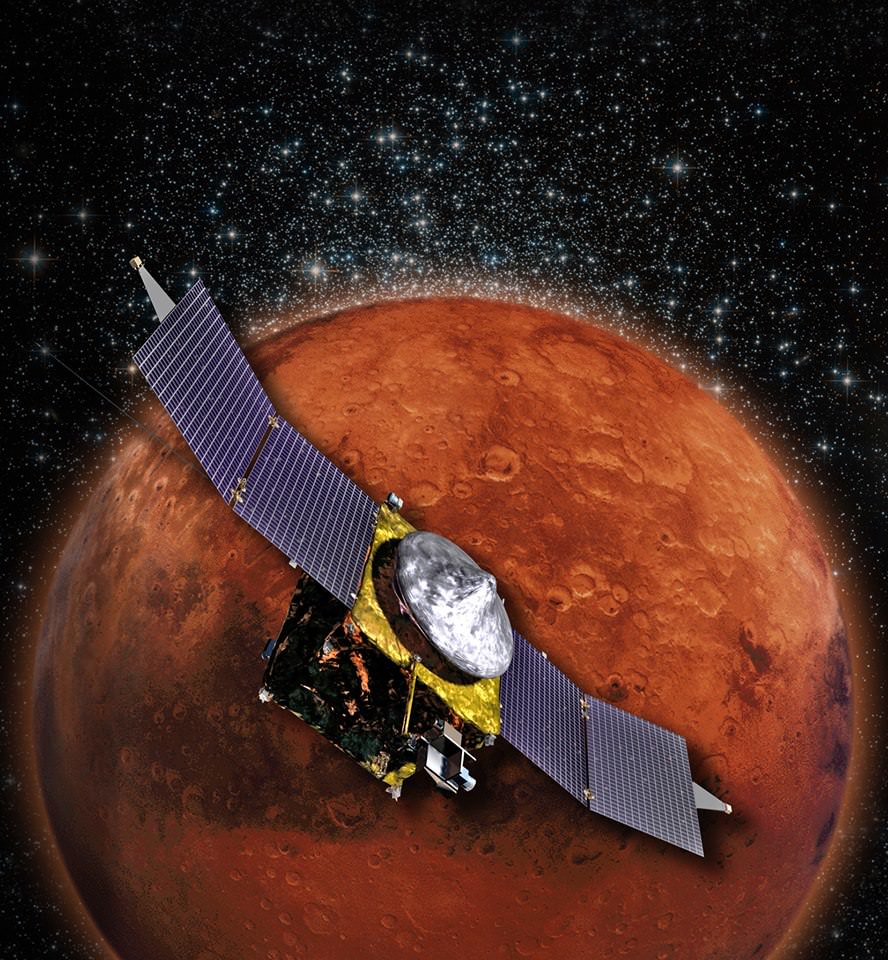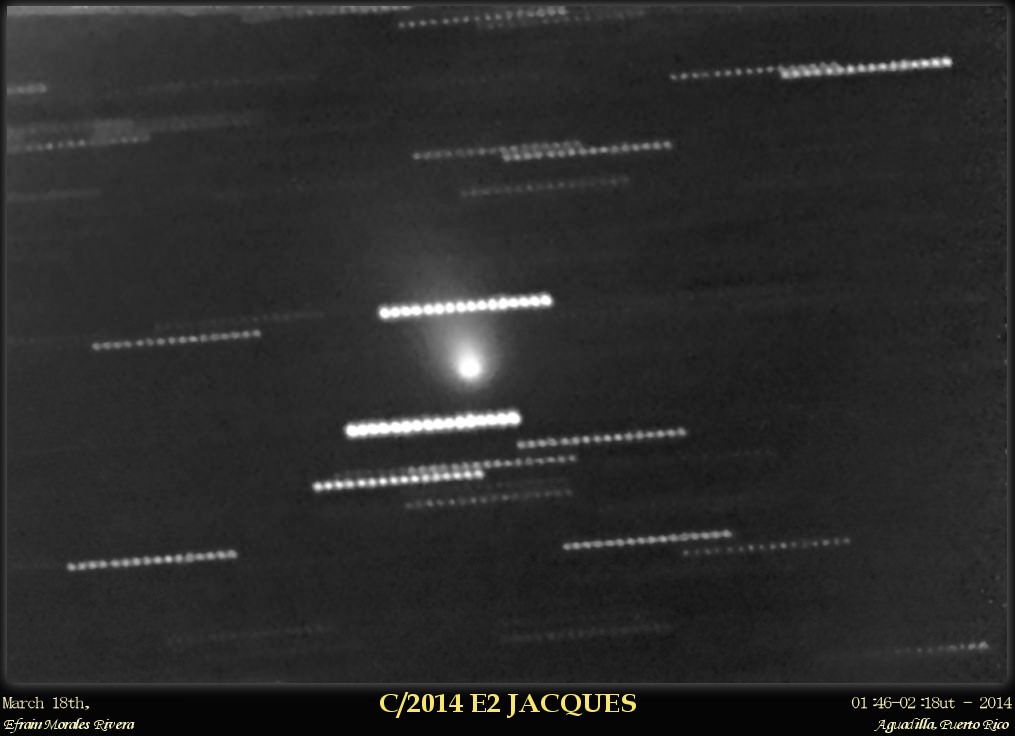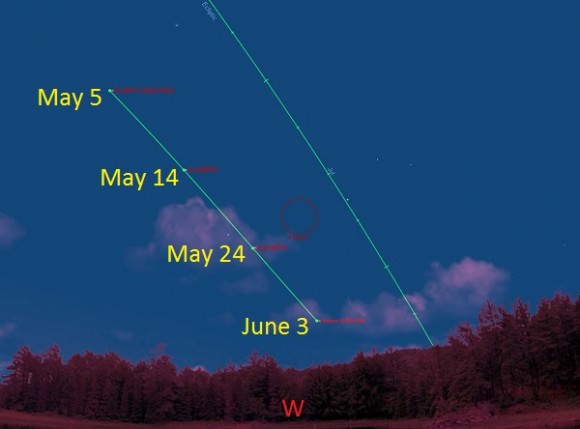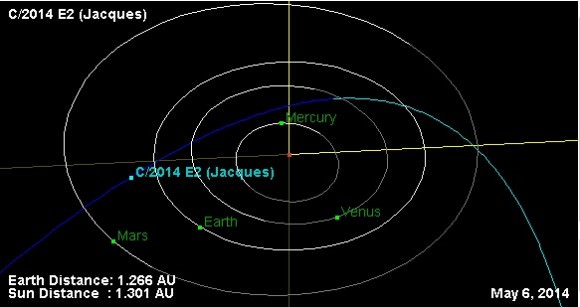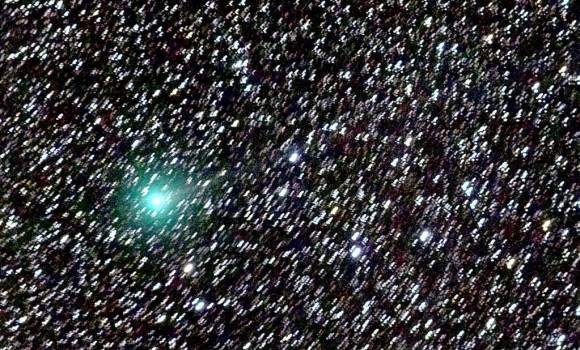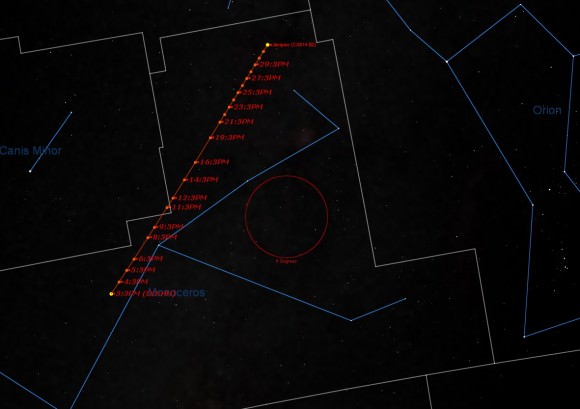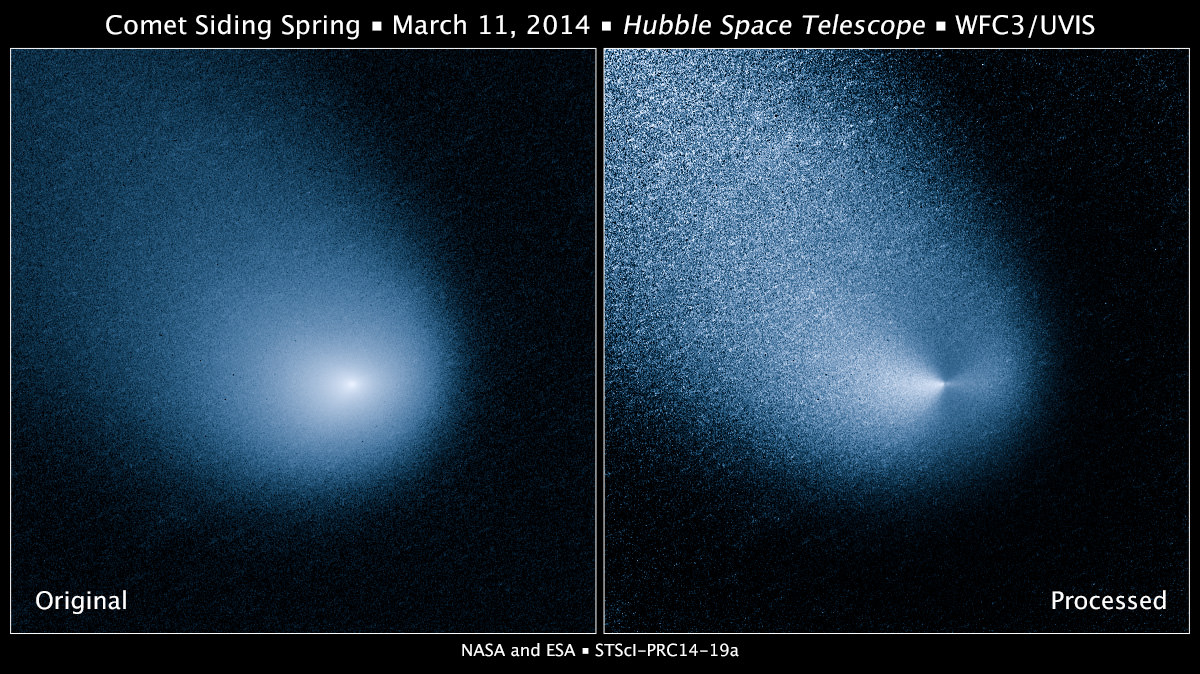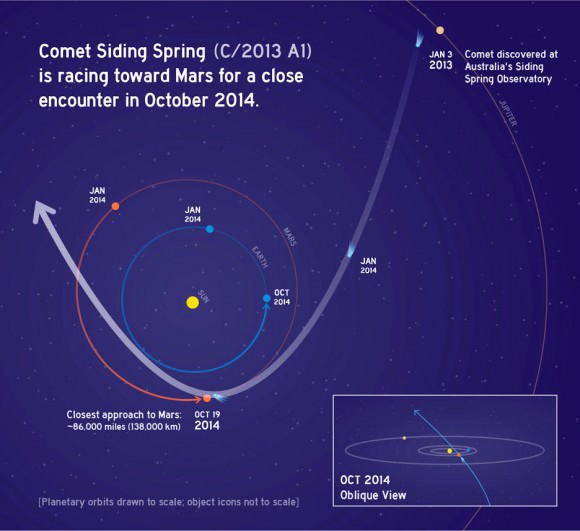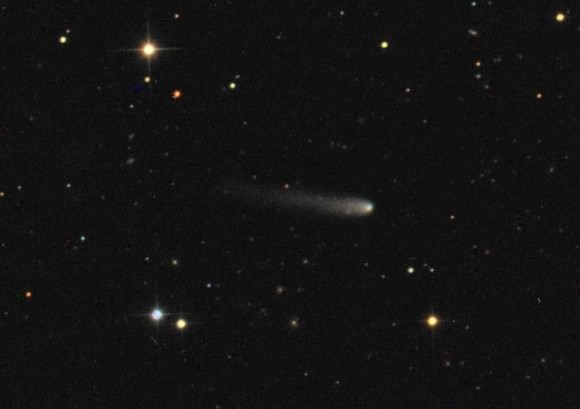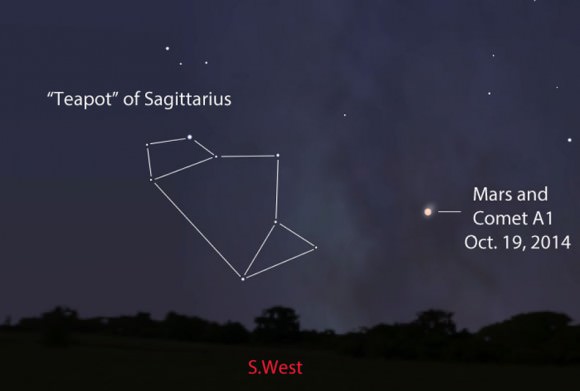MAVEN to conduct up close observations of Comet Siding Spring during Oct. 2014
MAVEN is NASA’s next Mars Orbiter and will investigate how the planet lost most of its atmosphere and water over time. Credit: NASA
Story updated[/caption]
NASA’s MAVEN Mars Orbiter is “ideally” instrumented to uniquely “map the composition of Comet Siding Spring” in great detail when it streaks past the Red Planet during an extremely close flyby on Oct. 19, 2014 – thereby providing a totally “unexpected science opportunity … and a before and after look at Mars atmosphere,” Prof. Bruce Jakosky, MAVEN’s Principal Investigator of CU-Boulder, CO, told Universe Today in an exclusive interview.
The probes state-of-the-art ultraviolet spectrograph will be the key instrument making the one-of-a-kind compositional observations of this Oort cloud comet making its first passage through the inner solar system on its millions year orbital journey.
“MAVEN’s Imaging Ultraviolet Spectrograph (IUVS) is the ideal way to observe the comet coma and tail,” Jakosky explained.
“The IUVS can do spectroscopy that will allow derivation of compositional information.”
“It will do imaging of the entire coma and tail, allowing mapping of composition.”

The images above show — before and after filtering — comet C/2013 A1, also known as Siding Spring, as captured by Wide Field Camera 3 on NASA’s Hubble Space Telescope. Image Credit: NASA, ESA, and J.-Y. Li (Planetary Science Institute)
Moreover the UV spectrometer is the only one of its kind amongst NASA’s trio of Martian orbiters making its investigations completely unique.
“IUVS is the only ultraviolet spectrometer that will be observing the comet close up, and that gives the detailed compositional information,” Jakosky elaborated
And MAVEN, or the Mars Atmosphere and Volatile Evolution, is arriving just in the nick of time to fortuitously capture this fantastically rich data set of a pristine remnant from the solar system’s formation.
The spacecraft reaches Mars in less than 15 days. It will rendezvous with the Red Planet on Sept. 21 after a 10 month interplanetary journey from Earth.
Furthermore, since MAVEN’s purpose is the first ever detailed study of Mars upper atmosphere, it will get a before and after look at atmospheric changes.
“We’ll take advantage of this unexpected science opportunity to make observations both of the comet and of the Mars upper atmosphere before and after the comet passage – to look for any changes,” Jakosky stated.
How do MAVEN’s observations compare to NASA’s other orbiters Mars Odyssey (MO) and Mars Reconnaissance Orbiter (MRO), I asked?
“The data from the other orbiters will be complementary to the data from IUVS.”
“Visible light imaging from the other orbiters provides data on the structure of dust in the coma and tail. And infrared imaging provides information on the dust size distribution.”
IUVS is one of MAVENS’s nine science sensors in three instrument suites targeted to study why and exactly when did Mars undergo the radical climatic transformation.
How long will MAVEN make observations of Comet C/2013 A1 Siding Spring?
“We’ll be using IUVS to look at the comet itself, about 2 days before comet nucleus closest approach.”
“In addition, for about two days before and two days after nucleus closest approach, we’ll be using one of our “canned” sequences to observe the upper atmosphere and solar-wind interactions.”
“This will give us a detailed look at the upper atmosphere both before and after the comet, allowing us to look for differences.”
Describe the risk that Comet Siding Spring poses to MAVEN, and the timing?
“We have the encounter with Comet Siding Spring about 2/3 of the way through the commissioning phase we call transition.”
“We think that the risk to the spacecraft from comet dust is minimal, but we’ll be taking steps to reduce the risk even further so that we can move on toward our science mission.”
“Throughout this entire period, though, spacecraft and instrument health and safety come first.”
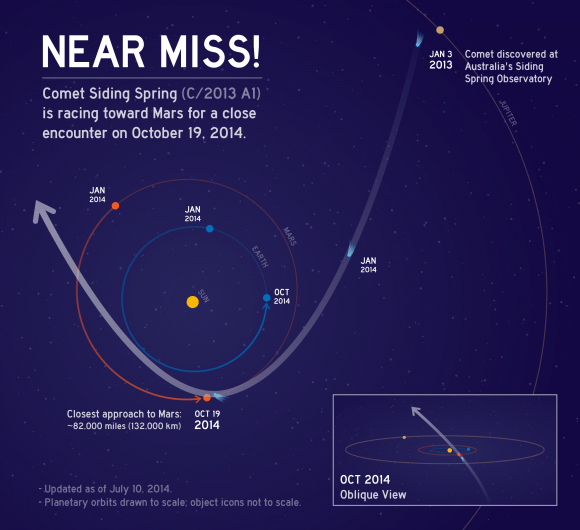
What’s your overall hope and expectation from the comet encounter?
“Together [with the other orbiters], I’m hoping it will all provide quite a data set!
“From Mars, the comet truly will fill the sky!” Jakosky gushed.
The comet’s nucleus will fly by Mars at a distance of only about 82,000 miles (132,000 kilometers) at 2:28 p.m. ET (18:28 GMT) on Oct. 19, 2014. That’s barely 1/3 the distance from the Earth to the Moon.
What’s the spacecraft status today?
“Everything is on track.”
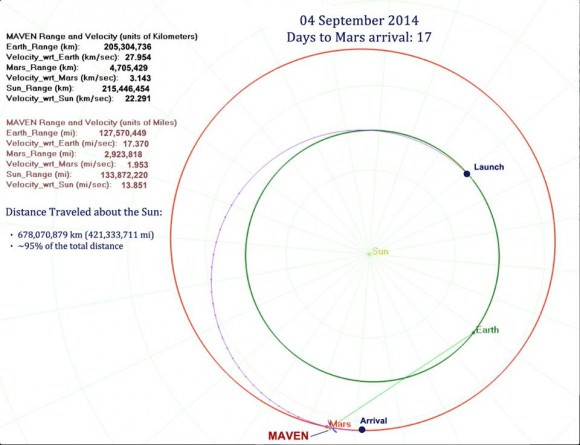
The $671 Million MAVEN spacecraft’s goal is to study Mars upper atmosphere to explore how the Red Planet lost most of its atmosphere and water over billions of years and the transition from its ancient, water-covered past, to the cold, dry, dusty world that it has become today.
MAVEN soared to space over nine months ago on Nov. 18, 2013 following a flawless blastoff from Cape Canaveral Air Force Station’s Space Launch Complex 41 atop a powerful Atlas V rocket and thus began a 10 month interplanetary voyage from Earth to the Red Planet.
It is streaking to Mars along with ISRO’s MOM orbiter, which arrives a few days later on September 24, 2014.
So far it has traveled 95% of the distance to the Red Planet, amounting to over 678,070,879 km (421,332,902 mi).
As of Sept. 4, MAVEN was 205,304,736 km (127,570,449 miles) from Earth and 4,705,429 km (2,923,818 mi) from Mars. Its Earth-centered velocity is 27.95 km/s (17.37 mi/s or 62,532 mph) and Sun-centered velocity is 22.29 km/s (13.58 mi/s or 48,892 mph) as it moves on its heliocentric arc around the Sun.
One-way light time from MAVEN to Earth is 11 minutes and 24 seconds.
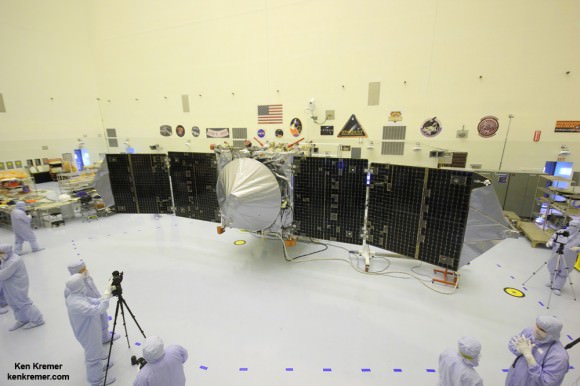
Stay tuned here for Ken’s continuing MAVEN, MOM, Rosetta, Opportunity, Curiosity, Mars rover and more Earth and planetary science and human spaceflight news.
